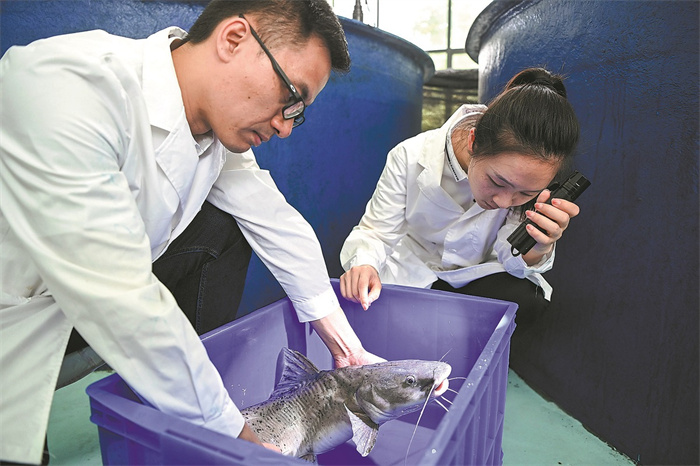Conservation protects fish stocks in Guangxi

Workers check the status of a rescued spotted longbarbel catfish at the Hongshui River Conservation Center for Rare Fish in May last year. CAO YIMING/XINHUA
The center is the country's first institute for aquatic ecology protection established by the government, participated in by enterprises, funded by stakeholder businesses and managed by a commission.
"The center is a pioneer in the country in regard to its management concept and operation," he said.
The 11 hydropower plants provide 17 million yuan ($2.4 million) annually to the center, which has 20 permanent employees and is also supported by at least 10 workers from third-party service providers, he said.
Aside from its breeding department, the center also has teams dedicated to monitoring and conserving the river's biological resources.
"In its short history, the center has already made some progress in biodiversity conservation," Zhang said.
He said, to date, the center has collected about 4,600 fish of rare species for protection, including spotted longbarbel catfish and white cloud mountain minnow, both of which are under second-class State protection, and Acrossocheilus iridescens longipinnis, a species of cyprinid fish.
Breakthroughs have been made in breeding white cloud mountain minnow and Acrossocheilus iridescens longipinnis, with 200 and 10,500 hatched, respectively, he said.
"We screen for species under threat first and then make them priorities of our breeding efforts," he said.
While the breeding technologies the center develops will be shared with its member institutions, Zhang said the fish fry it cultivates will be freed into natural water bodies.
The efforts aim to enrich populations of fish species and enhance fish biological diversity in the river basin, he said.
For the species that are endangered and with a very limited population, the center will keep some live fish and also freeze their germ cells, he noted.
"With these cells, there remains a possibility to recover the population of these species in the future, though that is not possible in the short term with current technologies," he said.














